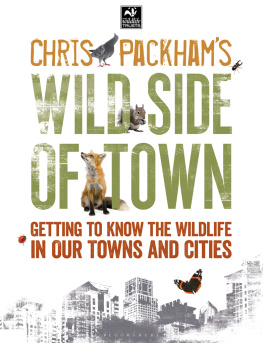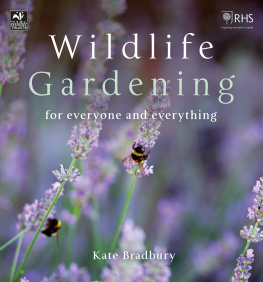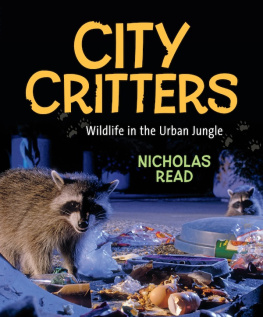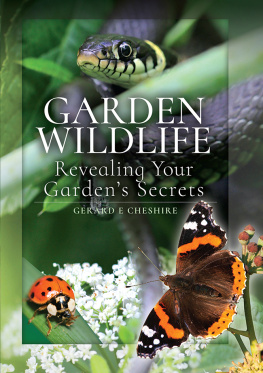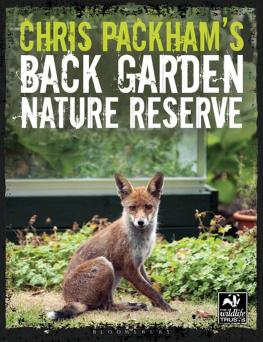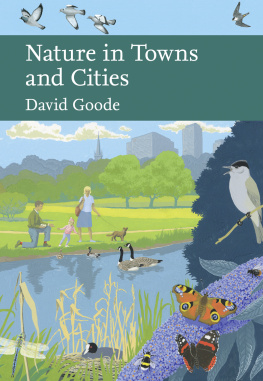
Dedicated to Clash City Rockers with kids.
This electronic edition published in 2015 by Bloomsbury Publishing Plc
First published in 2003 by New Holland Publishers (UK) Ltd
Copyright 2015 text Chris Packham
Copyright 2015 photographs as credited below and
The moral right of Chris Packham has been asserted.
All rights reserved
You may not copy, distribute, transmit, reproduce or otherwise make available this publication (or any part of it) in any form, or by any means (including without limitation electronic, digital, optical, mechanical, photocopying, printing, recording or otherwise), without the prior written permission of the publisher. Any person who does any unauthorised act in relation to this publication may be liable to criminal prosecution and civil claims for damages.
Every reasonable effort has been made to trace copyright holders of material reproduced in this book, but if any have been inadvertently overlooked the publishers would be glad to hear from them. For legal purposes the constitute as an extension of the copyright page.
Bloomsbury Publishing Plc
50 Bedford Square
London
WC1B 3DP
www.bloomsbury.com
Bloomsbury is a trademark of Bloomsbury Publishing Plc
A CIP catalogue record for this book is available from the British Library
ISBN (paperback) 978-1-4729-1605-1
ISBN (ePub) 978-1-4729-1606-8
ISBN (ePDF) 978-1-4729-1607-5
Page numbers refer to the print edition.
Photographs appearing on the cover and prelim pages are as follows:
(From the top, left to right) Common Toad: Bruce Coleman Collection (Kim Taylor); Small Tortoiseshell, Butterfly: Oxford Scientific Films (G.A. Maclean); Robin: Dr Ian D.C. Shephard; Grass Snake: Chris Packham; Red Fox: Bruce Coleman Collection (Jane Burton); Hedgehog: A. Prescott; Fungi growing from pavement: Chris, Packham; Garden Spider: Steven J. Brookes; Badger: Dr Ian D.C. Shephard.
To find out more about our authors and books visit www.bloomsbury.com. Here you will find extracts, author interviews, details of forthcoming events and the option to sign up for our newsletters.
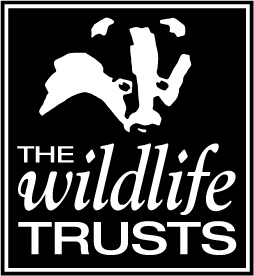
THE WILDLIFE TRUSTS

The Wildlife Trusts are the UKs largest people-powered organisation caring for all nature rivers, bogs, meadows, forests, seas and much more. We are 47 Wildlife Trusts covering the whole of the UK with a shared mission to restore nature everywhere we can and to inspire people to value and take action for nature for future generations.
Together we care for thousands of wild places that are great for both people and wildlife. These include more than 760 woodlands, 500 grasslands and even 11 gardens. On average youre never more than 17 miles away from your nearest Wildlife Trust nature reserve, and most people have one within 3 miles of their home. To find your nearest reserve, visit wildlifetrusts.org/reserves , or download our free Nature Finder iPhone app from the iTunes store. You can also find out about the thousands of events and activities taking place across the UK from bug hunts and wildplay clubs to guided walks and identification courses on the app or at wildlifetrusts.org/whats-on
We work to connect children with nature through our inspiring education programmes and protect wild places where children can spend long days of discovery. We want children to go home with leaves in their hair, mud on their hands and a little bit of nature in their heart. Find out more about our junior membership branch Wildlife Watch and the activities, family events and kids clubs you can get involved with at wildlifewatch.org.uk
Our goal is natures recovery on land and at sea. To achieve this we rely on the vital support of our 800,000 members, 40,000 volunteers, donors, corporate supporters and funders. To find the Wildlife Trust that means most to you and lend your support, visit wildlifetrusts.org/your-local-trust
The Wildlife Trusts
The Kiln, Mather Road,
Newark, Nottinghamshire
NG24 1WT
t: 01636 677711
e:
Registered Charity No 207238
wildlifetrusts.org
Find us on
Twitter @wildlifetrusts
Facebook facebook.com/wildlifetrusts
CONTENTS

INTRODUCTION
Most of us live or work in cities, large towns, small towns or in areas where our impact upon the landscape is impossible to disguise. Ours is the realism of the Twenty-first Century; it is not utopian; it is not unspoiled; it is far from perfect, but none of this need stop us from finding a little romance in the wreckage.
For all our disregard for our fellow creatures, for all our negligence and selfishness, we have not managed to stifle Natures extraordinary tenacity, her overpowering drive to survive at any cost. Thus, our office blocks and gasworks are far from sterile. They offer a resource, albeit modified, to whole communities of other animals that have found the concrete and corroded cast-iron comfortable.
It is part of a naturalists psyche to daydream of great wildlife-laden wildernesses, of a reedbed stretching unbroken into the distant haze of a soft blue horizon and gently brushed into waves by the summers breeze. Three Marsh Harriers flop back and forth, brushing the reed tips, peering down for a glimpse of vole or frog or fledgling. Somewhere a Bittern is booming and closer a gang of Bearded Tits ping from behind the screen of a million waving stems but stirred from our reverie, it is typically the slab side of an office block or the faded grandeur of a rusted gasworks that meets our gaze.
Lets stop dreaming and open our eyes to the wild side of our towns. Youll find things you could never have dreamed of living alongside you and, if you take a second and more studied look at the familiar, youll see theyre not so contemptible after all. And, for myself at least, the contrast between our crude constructions and the plain beauty of nature is often striking, and only serves to exaggerate the latter. A Blackbird singing in a forest is somewhat lost in the splendour, but perched on a street light above grid-locked traffic, it becomes a poignant jewel and its well-known phrases attain symphony status. So snap out of your wistful wishing for wilderness perfection, wind down your window and drink in the rich reality of a simple song. You may have overheard it a thousand times, but I bet it can still stir you, until the driver behind has to with his or her rude horn!

The city may not be a romantic place, but its where most of us live, and, if you take a closer look, you will find it is bristling with real beauty.
About this book
Not all the creatures that live alongside us are as well liked. Many, it seems, are shunned simply because they do successfully live with us and successfully resist our attempts to discourage or destroy them. In fact, the most urban of our fauna are rarely loved: rats, mice, pigeons, cockroaches and spiders are, in the main, persecuted along with weeds, whilst mosses and lichens are overlooked and ignored. Against all this prejudice I have taken the ambitious and audacious step of championing this posse in the pages that follow. I dont expect thousands of recruits for the Cockroach Club of Great Britain or the Black Rat Reintroduction Project nor any enthusiasm for the inauguration of the Royal Battersea Moss and Lichen Show. What I hope is that in the light of new knowledge, here provided, you will consider their cases fairly, remove your black caps for sentencing and embrace a little of the live and let live philosophy that I extend to these remarkable survivors.

